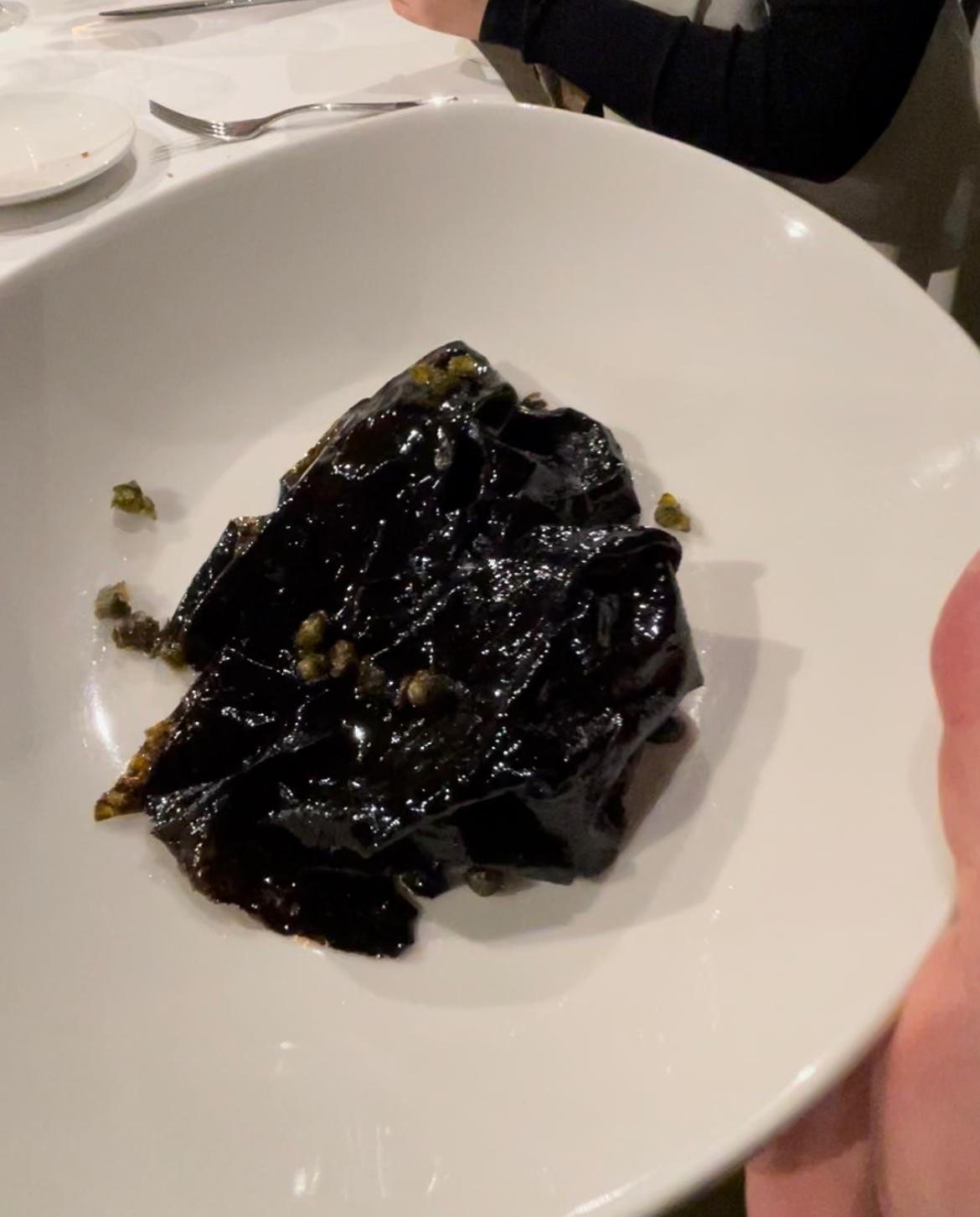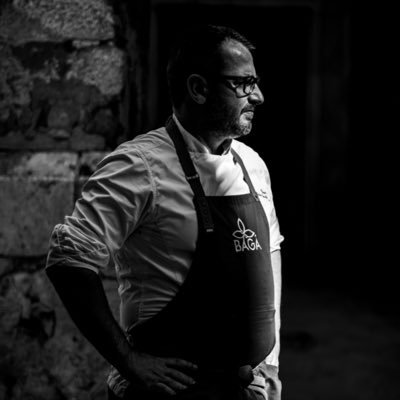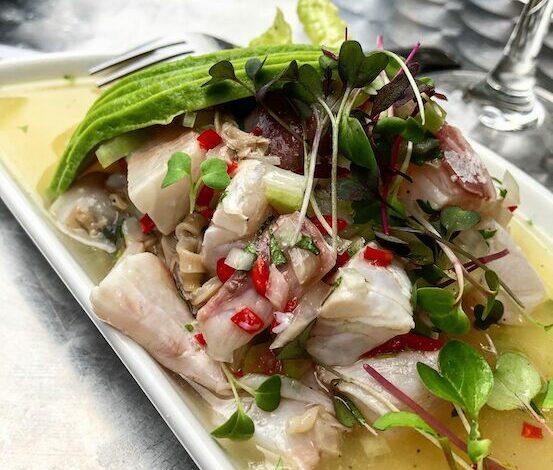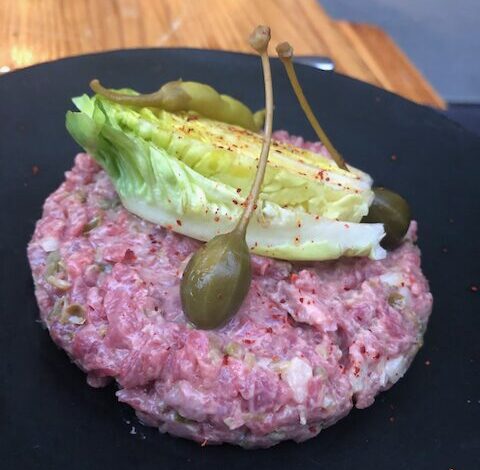
The Culinary Revolution of Pedrito Sanchez
The first time Pedrito Sanchez popped up on my radar was through Luis Arrufat. “Your family’s from Malaga, right? Then you gotta make the trip to Jaen,” he insisted. I haven’t made it there yet, but I started digging into this chef. Turns out, he runs the smallest Michelin-starred restaurant in Europe, located in the least visited province of Andalusia. What used to be an old bar he transformed into a micro-restaurant, manned by just five people and equipped with gear you’d find in your average kitchen: four induction burners, an oven, a microwave, a vacuum sealer, and a couple more gadgets. Despite the modest setup, he’s become the talk of the chef community.

There are around 200 one-star restaurants in Spain, but only a handful become the hot topic among chefs, and Bagá nailed it from the very beginning. Just take a peek at his social media, and you’ll see three-star chefs from around the globe dining there. There’s something implicitly expressed in his dishes that you don’t even need to taste to get a sense of, like having a first encounter on an intellectual level or through your mind’s palate. His contrasts are striking, his combinations ingenious, like an appetizer of oxidized pear atop eel foam. His plates never have more than two elements, and some of them resemble literary devices or clever puzzles, like making a caviar cream to glaze a dish of lentils. Lentils and caviar on the same plate—rich and poor food combined, resulting in what seems like a giant caviar dish.
“That dish I removed from the menu because the lentils weren’t cooking properly. I don’t want any enemies.” he told me.
I remember using him as a reference during brainstorming sessions with my buddy Adriano Mejía when conceptualizing dishes for a restaurant we opened together. There’s boldness, and there must be serious skill in serving something like that in any kind of restaurant because there’s no middle ground. You could be hailed a genius or dismissed as an idiot; it either works or it doesn’t, but there’s no halfway.
My buddy Phil often says the truly great cooks can pinpoint a dish’s optimal point and then start stripping away elements until they reach its pure core essence. When Pedrito Sanchez presented his dishes at Madrid Fusión, he said, “Sometimes I’m embarrassed to present my dishes here because they’re not very elaborate,” as he served a plate of three shrimp over shiitake broth. “I used to do it with partridge escabeche, but everyone started doing it, so I changed it to shiitake water,” he added.
I heard Pedrito Sanchez would be hosting a dinner in Donosti with three other chefs, so I decided to go, if only to sample some of his dishes in event format, which always ends up being different from what you get at an actual restaurant. The real draw was the company he kept—three out of four chefs who snagged a Michelin star in Jaen publicly acknowledge him as the leader of a movement that started with the opening of his restaurant and has put Jaen on the gastronomic and tourist map.
The dinner kicked off, organized by the Basque Culinary Center and the Jaen provincial government, with top-notch wine and olive oil producers accompanying the menu.
It started with a Cream Tart featuring ‘Ajo Mataero’ a modern take on an old recipe of pork liver and apple.
Next up, a Bao stuffed with a grandma tomato-tuna stew, topped with a slice of tuna resembling a nigiri.
Then came a savory Eclair filled with classic cognac-infused partridge pâté, with chocolate on top—nasty, nasty.
The white asparagus with fresh baby asparagus and caviar wasn’t my favorite (Restaurant Vandelvira), nor were the fava beans with pickled radishes and an intense old fava bean cream (Restaurant Malak).
But then came the highlight of the menu: Pedrito Sanchez from Bagá, the reason I came. Two elements, nori cooked à la meunière with toasted butter and fried capers. Bam. Take that. That’s art with food. Stimulating the mind and the senses. A cuisine that says a lot with very little. It’s hard to explain. Two ingredients that, beyond the food, can be a playful and intellectual challenge.
Then came the perfect closing before dessert: a lamb dish with an ‘ajo de harina’ an old-style cod, tomato, pepper, cumin, and saffron cream. Grandma’s Andalusian comfort food in high-end form.
For dessert, Pedrito’s second transgression against the status quo: a dessert that’s simply lettuce in syrup, rice vinegar ice cream. When I asked why that dessert, he said, “Because after a long menu, you need something light. After eating a ton of food, something light might be just the thing, and what’s lighter than lettuce?” It’s an anti-dessert, a transgressive statement like all his dishes.
But the most interesting part was seeing the couple sitting across from us. They weren’t intellectual snob chefs like my companions and me, trying to dissect every aspect of the meal. No, they were regular, unpretentious people who were genuinely bewildered and amazed by a dessert of lettuce and rice vinegar. That’s when you know a dish truly works.
As the chefs left amidst applause, Pedrito spoke up: “I want to apologize for the nori dish; it’s not how it comes out in my restaurant.” And that was all he had to say.
For me, he’s one of the most exciting chefs in Europe right now, one of those who goes beyond the kitchen and communicates a statement through his actions. He puts a lot of thought into creating dishes that are easy to execute during service. This not only translates into bold flavors in each dish but also into the quality of life and intellectual development of his workers, who are always quite young. “I like to surround myself with young people. I’m praised for how I treat the interns who come to my restaurant, but it’s only natural; they’re interns. I find it outrageous that there are restaurants out there relying on 40 overworked employees with overtime just to function. That’s something that needs to stop.” Beyond the kitchen, his ethos of nurturing young talent underscores a commitment to fostering a sustainable and ethical culinary landscape.



